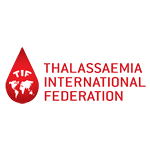International Thalassaemia Day Date in the current year: May 8, 2025
 International Thalassaemia Day, also spelled International Thalassemia Day, is an annual observance held on May 8 to raise awareness of a genetic blood disorder that affects millions of people, commemorate individuals who’ve died from thalassaemia, and celebrate the patients who are fighting for a better quality of life.
International Thalassaemia Day, also spelled International Thalassemia Day, is an annual observance held on May 8 to raise awareness of a genetic blood disorder that affects millions of people, commemorate individuals who’ve died from thalassaemia, and celebrate the patients who are fighting for a better quality of life.Thalassaemia is an inherited blood disorder that is characterized by decreased production of hemoglobin. Its symptoms can vary from none to severe depending on the type of the disorder (the two main types are alpha thalassaemia and beta thalassaemia). People with thalassaemia usually have mild to severe anemia and associated symptoms (fatigue, pale or yellowish skin, dark urine, and an enlarged spleen). Children with thalassaemia might experience stunted growth.
For a child to inherit thalassaemia, both parents must be carriers; the risk of inheriting the disease when both parents are carriers is 25%. Thalassaemia is especially prevalent in the Mediterranean region. It most often affects people of African, Greek, Italian, Middle Eastern, Turkish, and South Asian descent.
The management of thalassaemia depends on its type and level of severity. Patients with mild thalassaemia usually do not require treatment after being diagnosed with the condition. However, people with beta thalassaemia should be made aware that they need to avoid taking iron supplements without consulting a doctor first.
Patients with severe thalassaemia require medical treatment. The first treatment method found to be effective in improving life expectancy is a blood transfusion regimen. However, frequent blood transfusions have a side effect in the form of iron overload, which can damage the liver and heart. Because of this, transfusion-dependent thalassaemia patients usually need chelation therapy to remove excess iron from their bodies.
There are patients who do not respond well to blood transfusion; they can manage the condition by taking medications. The only drug for thalassaemia approved by the FDA is hydroxyurea. In some patients, a bone marrow transplant from a HLA-matched donor may be an option. The success rates of this treatment are the highest among very young people.
International Thalassaemia Day was established by the Thalassaemia International Federation in 1994. Its main objectives are to increase awareness of the disorder and to educate people about the importance prenatal screening and management of the disease that centers on patients.
Every year, the Thalassaemia International Federation selects a new theme for the day to focus on a particular aspect related to the condition, such as access to safe and effective medications, knowledge and experience exchange between patients, their families and healthcare professionals, universal access to quality healthcare services and novel therapies, etc.
You can observe International Thalassaemia Day by posting on social media about the disease and awareness day to spread the word and by donating blood to help thalassaemia patients that need regular transfusions.
- Category
- International Observances
- Tags
- International Thalassaemia Day, International Thalassemia Day, blood disorder, international observances, awareness days